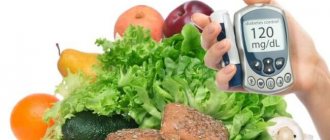The concept of insulin and its functions
In the human body, everything is thought out to the smallest detail. Each organ or system is responsible for certain processes. By disrupting the functioning of one of them, you can say goodbye to good health once and for all. Of course, many of us have heard about hormones as certain substances that are produced by certain glands. They are different in their chemical composition, but they also have common properties - to be responsible for the metabolism in the human body, and therefore for its good functioning.
Insulin is a hormone produced by the pancreas, or more precisely, by formations located in its very depths. In medicine they are also called islets of Langerhans-Sobolev. By the way, note that insulin is a hormone that affects almost all functions in the human body. It belongs to the peptide series and is created to qualitatively saturate all cells of the body with necessary substances.
The pancreatic hormone insulin is capable of transporting potassium, various amino acids, and most importantly, glucose through the blood. The latter is responsible for the balance of carbohydrates. The scheme is this: you eat food, the level of glucose in the body increases, therefore, the level of insulin in the blood increases. We often hear in medicine about such a substance as insulin. Everyone immediately associates it with diabetes. But to answer a simple question: “Insulin is a hormone of what, an organ or a tissue? Or maybe it is produced by the whole system?” - not every person can.
The action of the hormone insulin is to ensure normal nutrition of all cells of the body. It is primarily responsible for establishing the balance of carbohydrates in the human body. But when the pancreas malfunctions, protein and fat metabolism simultaneously suffer. Keep in mind that insulin is a protein hormone, which means it can enter the human stomach from the outside, but it will be quickly digested there and not absorbed at all.
The action of the hormone insulin is to influence most enzymes. But its main task, according to scientists and doctors, is the timely reduction of glucose in the blood. Doctors often prescribe a special test that will clearly reveal whether the patient’s insulin hormone is elevated or not. Thus, it is possible to determine whether the patient’s ailments are associated with incipient diabetes mellitus or with another disease. Of course, you can live with such a diagnosis, the main thing is to detect it in time and begin supportive therapy.
The main task of insulin
- maintain a relatively constant safe level of glucose in the blood. Excessive production of the hormone leads to its rapid binding to glucose, as well as blocking the fat-burning enzyme and fat accumulation. Therefore, it is important to monitor the insulin response of the foods consumed.
It is necessary to increase the proportion of products with predominantly low and medium levels of AI, which minimize surges in blood glucose, do not overload the liver with unnecessary work, and saturate the body with essential nutrients for a longer period of time.
Indicators for women
With increased energy costs, the body uses a large amount of glucose. To prevent sugar from accumulating in the blood and being transported to its intended destination, the pancreas is forced to increase the production of insulin. In women, insulin production also depends on hormonal levels at one time or another in life.
Table of digital hormone values
| Female children | Adult women | Age 60+ | Perinatal period |
| from 3 to 20 µU/ml | from 3 to 25 µU/ml | from 6 to 35 µU/ml | from 6 to 27 µU/ml |
A slight deviation from the norm is allowed in girls during puberty. To determine the rate of production and quality of the hormone, a blood test with a load on glucose tolerance (glucose tolerance test) is prescribed. The initial blood draw is performed on an empty stomach, then the patient needs to drink a solution of water with glucose. After two hours, the analysis is repeated. After a glucose load, the following changes in insulin levels are normal:
- for adult women – 13–15 µU/ml;
- in the perinatal period from 16 to 17 µU/ml.
This type of analysis is prescribed when doctors suspect diabetes mellitus (type 1 or 2), gestational diabetes, and other pathologies. Testing can be done not only by blood, but also orally.
Medical standards for insulin
Any indicator has a certain scale of values by which one can judge the patient’s condition. If we say that insulin is a hormone of the pancreas, it is worth understanding that after each meal it can be increased. Therefore, there are some standards for taking tests. You must not eat 1.5 hours before or come for the study strictly on an empty stomach.
Then there is a high probability of a reliable result. The most basic thing that the doctor is trying to understand is whether the patient has diabetes, and if other problems arise, prescribe appropriate additional tests and medications. Let us immediately note that each medical laboratory or institution is able to indicate its individual values of the studied indicator, which will ultimately be considered normal.
In principle, the hormone insulin, the norm of which on an empty stomach will average 3-28 µU/ml, may also vary slightly. Therefore, when receiving analysis results, try not to panic, but rather visit a competent specialist to decipher them. For example, pregnant women have indicators that differ from other people (on average 6-28 µU/ml).
When a doctor suspects diabetes mellitus, it makes sense to already mention its two main types
:
- insulin hormone is low
– the pancreas does not cope with its job and produces it in insufficient quantities – type 1 diabetes;
- the hormone insulin is elevated
– the opposite situation, when there is a lot of the corresponding substance in the body, but it does not feel it and produces even more – type 2 diabetes.
Of course, an increase in this indicator will not always lead to diabetes mellitus.
One of the most common consequences can be obesity, and only then the disease of high blood sugar. Often, doctors and nutritionists, in order to explain to their patients the simple mechanism of excess weight formation, begin their story by answering a simple question: “Insulin is a hormone of which gland?” After all, people who eat large amounts of carbohydrate foods (for example, flour and sweet dishes) do not think about the load their pancreas experiences. Of course, you can eat these foods, but in moderate portions, then the whole system works organically.
We recommend
“Foods good for the kidneys: TOP-25 for good health” Read more
In general, with this diet, the following happens: insulin increases constantly (i.e., this process takes on a chronic form), but sugar enters the body in unlimited quantities, and as a result, it is simply stored in fat. And remember that in this case the appetite is greatly increased. A vicious circle, from which it will be very difficult for you to get out, is ensured: you eat a lot of unhealthy food and densely - insulin is increased - fat is deposited - appetite increases - again we eat in unlimited quantities.
How to prepare for the test
You need to take a test to determine your insulin level by following a number of rules. Otherwise, the results obtained will be unreliable. What you need to know about the analysis:
- Venous blood is used as a biomaterial;
- blood is taken on an empty stomach, provided that the last meal was no later than 10 hours before the start of the study;
- 5 days before the delivery of the biomaterial, it is necessary to exclude exhausting physical activity;
- at least 3 days before the test must be spent without drinking alcohol;
- if the patient is undergoing a course of drug treatment, the doctor must be warned about this, who, if necessary, will stop the therapy at the time of the study or postpone the tests until the course of treatment is completed;
- any stressful situations can affect the natural level of the hormone in the blood, so it is important to try to avoid conflicts and not worry a few hours before donating blood.
The result is usually ready the next day.
The concept of glycemic index and glycemic load
Before introducing the concept of insulin index, it is worth considering the more well-known and more often used concept of “glycemic index”.
The glycemic index (GI) characterizes the degree of absorption of complex carbohydrates from food and the subsequent level of blood saturation with glucose.
The GI value depends on the ability of complex carbohydrates to be broken down under the influence of digestive enzymes and on a number of “external” factors associated with cultivation, production technologies, storage conditions and culinary processing of food.
The GI value was determined experimentally - after taking a certain product, for 2 hours, every 15 minutes, a blood sugar test was carried out. Naturally, for such a comparison of the behavior of dietary carbohydrates and compiling a table, we took ordinary glucose as the starting point - absorption of 100 g = 100% or 1 g of glucose equals 1 conventional GI unit.
After a snack, the amount of sugar in your blood rises within 30 minutes. If you eat fast carbohydrates, then this time is reduced. The pancreas strives to reduce glucose levels, produces insulin and directs it to the body's needs: either for energy or for reserves. It depends on what kind of carbohydrates and how much you ate - fast or slow. The fast ones cause a sharp jump and create a surplus, while the slow ones feed the body gradually. Therefore, when reducing the total caloric content of the diet, foods with a low GI are preferable - they maintain a feeling of fullness longer at the same calorie content.
Pros of low GI foods
:
- Gradually nourishes the body and prolongs the feeling of fullness.
- Does not cause a sharp increase in blood glucose.
- They don’t have time to get into the adipose tissue, because slowly spent on the needs of the body.
Disadvantages of Low GI Foods
:
- They take a long time to replenish glycogen stores, so they are not suitable for quickly obtaining energy.
- Low energy density. For example, it is impossible to get a large amount of carbohydrates from buckwheat, because such volumes are simply impossible to eat. Therefore, to quickly replenish energy, you need fast carbohydrates.
- Taste. In general, low GI foods are not as tasty as high GI foods.
Simultaneously with GI, the concept of Glycemic Load (GL) was introduced, because the metabolism of carbohydrate metabolism is affected not only by the structure of carbohydrates, but also by their direct quantity.
GN allows you to characterize the load on the pancreas experienced when producing the required amount of insulin in response to a specific food product. For example, the load from 50 g of potato carbohydrates is 3 times higher than from the same 50 g of vermicelli carbohydrates. Some considered this to be a low workload.
Information about the insulin used
Listed below are the types of insulin used at Memorial Sloan Kettering (MSK).
| Type | Name | Start of action | Maximum action | Duration of action |
| Fast acting | Aspart (NovoLog®) | 5–15 minutes | 30–60 minutes | 3–4 hours |
| Lispro (Humalog®) | 5–15 minutes | 60–90 minutes | 3–4 hours | |
| Fast acting | Novolin® R Regular | 30–60 minutes | 2–5 hours | 6–8 hours |
| Humulin® R Regular | 30–60 minutes | 2–4 hours | 6–8 hours | |
| Medium action | Novolin® N (NPH) | 1–2 hours | 6–12 hours | 12–14 hours |
| Humulin® N (NPH) | 1–2 hours | 6–12 hours | 12–16 hours | |
| Long-lasting | Glargine (Lantus®) | 1–2 hours | No maximum action time | Up to 24 hours |
| 1–2 injections of Detemir (Levemir®) daily | 1–2 hours | No maximum action time | Up to 24 hours | |
| Combined fast and medium action | NovoLog® Mix 70/30 (N/Aspart) | 30 minutes | 1–12 hours | 5–18 hours |
| Novolin® 70/30 (N+R) | 30–60 minutes | 4–12 hours | 14–16 hours | |
| Humalog® Mix 75/25™ (N/Lispro) | 5–15 minutes | 1–12 hours | 14–18 hours |
to come back to the beginning
Differences between the insulin index and the glycemic index
The development of research technologies and modern instruments have made it possible to conduct a number of studies and accurately estimate not only the amount of glucose that enters the blood, but also the time during which insulin helps to get rid of it.
The introduction of the concept of the insulin index was also inspired by the knowledge of the fact that not only carbohydrates command the pancreas to produce insulin. Meat and fish - products that do not contain carbohydrates or are characterized by a low content of them, during digestion, also contribute to the release of insulin into the blood.
Insulin index (II)
– a value that characterizes a food product from the point of view of the insulin response to it.
This indicator is especially important for type 1 diabetics and allows you to more accurately predict the amount of insulin injection. It would also do well for those watching their figure to pay more attention to this indicator. The fact is that when the level of glucose in the blood increases excessively, the pancreas has to produce more insulin to absorb the excess sugar. And when sugar drops below a certain level, a person begins to feel hungry again.
In addition, increased work of the pancreas over a long period depletes it and leads to metabolic disorders and hormone production. Products with a very high AI, moreover, give the body a signal to store fat and block lipase, the main fat-burning enzyme. But food with a low and medium insulin index does not cause a sharp jump in blood sugar levels, does not overload the pancreas with work, and a person feels full longer.
The main difference between the glycemic index and the insulin index is the different measurement of indicators. That is, the main task of GI is to measure glucose (therefore, for the most part, this indicator is applied to carbohydrates), and AI is to measure insulin (applies to any products, even those that do not contain carbohydrates). This is where the main difference lies.
We recommend
“Menu for allergies: design features, recipes” Read more
The glycemic index and insulin index are not always proportional to each other. For example, cottage cheese causes a very large release of insulin, although it has a low glycemic index and contains virtually no carbohydrates. That is, cottage cheese slightly increases blood sugar, but there is still a strong insulin response. This is a very important point, especially if you want to burn fat, because insulin interferes with weight loss. If you want to achieve good results, then when planning your diet you need to take both indicators into account, since each is important in its own way.
Clinical manifestations
Symptoms of insulin are caused by hypoglycemia, which stimulates the secretion of catecholamines - adrenaline and norepinephrine, and entails a glucose deficiency in the brain, which is equivalent to a decrease in oxygen consumption by nerve cells [6].
The clinical picture includes two groups of symptoms - acute and chronic hypoglycemia. The period of acute hypoglycemia develops as a result of a breakdown in the adaptation mechanisms of the central nervous and endocrine systems. The main symptoms of this period: weakness, sweating, hunger, nausea, vomiting, irritability, blurred vision, blurred vision, numbness of the lips and tongue, palpitations, muscle tremors, pain in the heart, convulsive muscle twitching and even real convulsions.
.
Lack of glucose in the brain (neuroglycopenia) causes mental agitation, hallucinations, delusions, retrograde amnesia, aggressiveness, negativism, disorientation in faces, in time, in space, talkativeness, obscene expressions. There is a kind of switching off of the cerebral cortex, a “riot of the subcortex.” Far advanced hypoglycemia leads to the development of hypoglycemic coma .
Most often, acute hypoglycemia develops early in the morning (due to the overnight period of fasting), the patient either “cannot wake up” or wakes up with difficulty, and the above-mentioned clinical picture is revealed. Deep coma can lead to irreversible changes in the central nervous system (decerebration) and death. The period of chronic hypoglycemia (interictal period) is characterized by symptoms of chronic damage to the central nervous system: headaches, decreased memory, mental performance, constant feeling of hunger
(patients often eat, consume a lot of carbohydrates and gain weight), pathological Babinski reflexes, inappropriate behavior [7].
Insulin resistance, its symptoms and methods of correction
If the state of elevated insulin levels persists for a long time and is not corrected in any way, insulin resistance occurs. Insulin resistance
- this is the insensitivity of cells to insulin, the inability for cells, figuratively speaking, to take glucose for use. As a result, the pancreas produces even more insulin to help glucose enter the cell. And as long as it is able to produce enough insulin, your sugar levels will remain normal.
This is why in people with insulin resistance, sugar levels can remain normal for a long time. Insulin resistance is a risk factor for a variety of diseases and conditions, such as metabolic syndrome, fatty liver disease, type 2 diabetes, atherosclerosis, hypertension, polycystic ovary syndrome and others.
The problem is that insulin resistance may not manifest itself in any way and may exist even in people with a normal body mass index. However, there are still some risk factors, namely
:
- Overweight or obesity.
- Age 45 years and above, although this disease is rapidly becoming younger.
- Family history of type 2 diabetes.
- Passive lifestyle.
- Hypertension and elevated low-density cholesterol.
- History of gestational diabetes.
- Polycystic disease.
Insulin resistance does not manifest itself for a long time, but there are a number of symptoms that can make you pay attention to this problem
:
- Papillomas, especially their accumulation in the same places - often the neck.
- Hyperpigmentation in skin folds, known as acanthosis nigricans.
- Retinopathy.
- Hunger intolerance, drowsiness after eating.
- High blood pressure.
Targeted nutrition tips
that will increase your energy level by 10 out of 10
From TOP nutritionists of the MIIN
Get tips
To correct insulin resistance, changes in diet and lifestyle are used primarily. Nutrition certainly influences insulin resistance. Minimum measures we can take
:
- It is necessary to eliminate sugar, eating only complex carbohydrates and some simple carbohydrates from fruits and berries with less fructose.
- Limit consumption of dairy products due to their high insulin index.
- Reduce coffee and caffeinated drinks to 1-2 per day.
- Reduce the number of calories adequate to their consumption.
- Avoid snacking on foods that increase insulin levels in the blood.
Often, a keto or LCHF diet is used to restore insulin sensitivity. Its essence is to reduce carbohydrate intake to a minimum and high fat intake. This type of eating encourages the body to burn fat as its main source of fuel (not only the fat that a person consumes in his diet, but also that stored in his body).
The approximate distribution of BJU on the LCHF diet is as follows - 20/65/15%, while on the keto diet carbohydrates are limited to 5%.
Differential diagnosis
Symptoms of hypoglycemia are polymorphic and nonspecific. The presence of neuropsychiatric disorders and the low prevalence of the disease often lead to diagnostic errors. As a rule, differential diagnosis is required with conditions such as epilepsy, catatonia, hebephrenia, neurasthenia, hysteria, migraine, psychosis, alcoholism, brain tumors, neurovegetative dystonia with hypoglycemic conditions. However, Whipple's triad is pathognomonic for Harris syndrome:
- the occurrence of attacks of hypoglycemia after prolonged fasting or physical exercise
- a decrease in blood glucose during an attack below 1.7 mmol/l in children under two years of age and below 2.2 mmol/l in children over two years of age
- relief of a hypoglycemic attack by intravenous administration of glucose or oral administration of glucose solutions [4].
Products to normalize insulin levels
There are various foods that have a positive effect on the body, helping it restore normal insulin levels. Such products include
:
- Seafood and various types of fish
. It is these products that become a source of protein for the body and help restore lipid metabolism. Sea fish is rich in polyunsaturated fatty acids. It is recommended to eat salmon, trout, herring, mackerel, sardines and anchovies.
Numerous tests have confirmed the beneficial effects of fish on insulin levels. It has been proven that women who consume this product lowered their blood insulin levels by 8.4% more than the group that did not consume fish at all.
- Fiber-rich foods
. These include various types of vegetables, cereals, unsweetened fruits. When fiber enters the intestines, under the influence of various biological fluids, it swells and turns into a kind of mush, which can not only absorb various harmful components and toxins, but also regulate immunity.
- Green tea
. Of course, in limited quantities, no more than two cups per day. It is in this quantity that it is beneficial for the body and can influence the regulation of insulin levels in the blood. This happens due to the high content of antioxidants, as well as catechin. It provides a higher degree of cell sensitivity to insulin.
- Cinnamon
. You should choose real cinnamon, and not its substitute - cassia, which does nothing but harm the body. Natural cinnamon is the thinnest bark of a special brown tree that grows in the tropics and is supplied to the country from there. Cinnamon also contains many amino acids that help regulate insulin.
- Apple vinegar
. It is still not recommended to use it in its pure form, but it makes an excellent combination with other ingredients and belongs to the category of products that increase insulin sensitivity.
Symptoms of unstable indicators
Diagnosis of diabetes
Signs of persistently high or low insulin include:
- polydipsia (permanent feeling of thirst);
- pollacuria (frequent urge to empty the bladder);
- dryness and tightness of the skin, rashes on the epidermis;
- polyphagia (increased appetite);
- vegetative-vascular disorders.
Symptoms characteristic of women are:
- inability to conceive a child (infertility);
- increased sweating (hyperhidrosis);
- the appearance of age spots on the face.
Symptoms are most pronounced during menopause. You should not ignore uncomfortable sensations, associating them only with the characteristics of menopause. Insulin instability may indicate serious illness.
Insulin index of certain foods
The insulin index is an innovation in the science of proper nutrition and a detailed table with its exact value for various foods is still in an “open” state, is incomplete and is constantly being updated with new data.
But for the most popular food products, all the necessary calculations have already been carried out and we have quite accurate information that can be used by diabetics and ordinary citizens who want to lose excess weight.
Insulin index of greens and vegetables
Potato insulin index
Insulin index of berries, fruits and fruits
Insulin index of dairy products
Insulin index of sweets and treats
Insulin index of cereals and grains
Insulin index of bread, pastries and confectionery products
Insulin index of other common foods
Knowing the insulin index of foods is not enough. For the best result, it is important to take into account the compatibility of products. A great option is to combine vegetables with proteins and fats (vegetable salad with olive oil and a piece of poultry). Starchy foods (porridge, beans, potatoes, white rice, beets) are good to eat with leafy vegetables and oils.
Avoid combining fast carbohydrates with starchy, protein foods (a sandwich or burger is one of the typical combinations). It is not the best option to mix protein foods (fish, meat, poultry) with starchy foods (that is, with traditional side dishes - white rice or mashed potatoes).
We recommend
“Buckwheat tea: beneficial properties, contraindications and reviews” Read more
Here are some more simple tips to consider when planning a diet for diabetics:
and people suffering from prediabetic conditions.
- For a very long time, the thesis has flourished in dietetics that such “healthy” foods with a low glycemic index, such as cottage cheese, are best consumed at night; this, in theory, should promote weight loss and active “nighttime” fat burning. But with the advent of new research on the insulin index, the outdated postulates of nutrition science must be adjusted.
It has now become clear that cottage cheese has a very high AI and is not suitable for consumption in the afternoon by people with diabetes and those with insulin resistance.
- Products with an insulin index above average go very poorly with fatty foods.
- When drinking alcohol with a “bad” AI, it is better to avoid high-fat snacks.
- The first half of the day is a great time to refuel with something tasty with a high insulin index. It is best to have dinner with fish, vegetables, seafood and other “goodies” with a low insulin and glycemic index, in order to eliminate the possibility of sharp evening insulin surges and protect the body from gaining excess weight.
Why is insulin resistance dangerous?
Even in people without serious changes in metabolism, insulin resistance triggers the processes of early aging; it is also known today that it is precisely it that is associated with severe cardiovascular pathologies and their dangerous complications (stroke, heart attack, acute cerebrovascular accidents, diabetic neuropathy, etc.).
Insulin resistance is very common. In 10-15% of adults (without chronic diseases and diagnoses) it can be detected by chance, during any examinations. This means that thousands of people not only do not know about it, but are also at risk of dangerous diseases!
It may seem that insulin resistance is a very insidious and hidden enemy of health, but in fact this disguise is very arbitrary, because a deviation can be suspected in the presence of specific problems in appearance and well-being.
For example, all women, especially middle-aged women, are familiar with the problem of being overweight. There comes a time when extra pounds literally become fused with the body, it is almost impossible to lose them, no diets help. Moreover, it feels like the excess weight is concentrated in the abdominal area - which is why many women dream of losing weight specifically at the waist, pumping up their abs, without attaching importance to other parts of the body. Meanwhile, age
and
the accumulation of adipose tissue in the abdominal area
(the so-called abdominal obesity, of the central type) are two of the most important factors that trigger the development of insulin resistance and support its strengthening.
Women over 35 years of age may experience various hormonal abnormalities.
, which at this age do not yet lead to the development of diseases, but create a “storm” in the body. Fluctuations in the content of estrogen and testosterone (and long before the onset of menopause), a decrease in the concentration of thyroid hormones and an increased release of stress hormones - adrenaline, cortisol - all this primarily affects physical health. Problems that are related to each other are gradually accumulating: excess weight, increased cholesterol levels in the blood, high blood pressure. Insulin resistance can be either a consequence of these changes in the body or their faithful companion.
Bad habits, lack of physical activity, and a diet based on fast food contribute to the development of insulin resistance.
and generally
poor quality of food
. By the way, strict diets and other food restrictions can also be attributed to poor quality of nutrition: the body does not get better from them, and the constant “swing” of losing and gaining weight only increases the tendency to insulin resistance.
If you think about it, in the lives of each of us there are at least a couple of the listed harmful factors, so if some problem has been bothering you for a long time and seriously (can’t lose weight, constantly high blood pressure, headaches and weakness), you should consult a doctor and describe him a complete picture of his symptoms. It’s not uncommon to dot all the points
i is assisted by an endocrinologist and carrying out several tests (glucose, glucose tolerance test, glycated hemoglobin, insulin resistance index, etc.).








